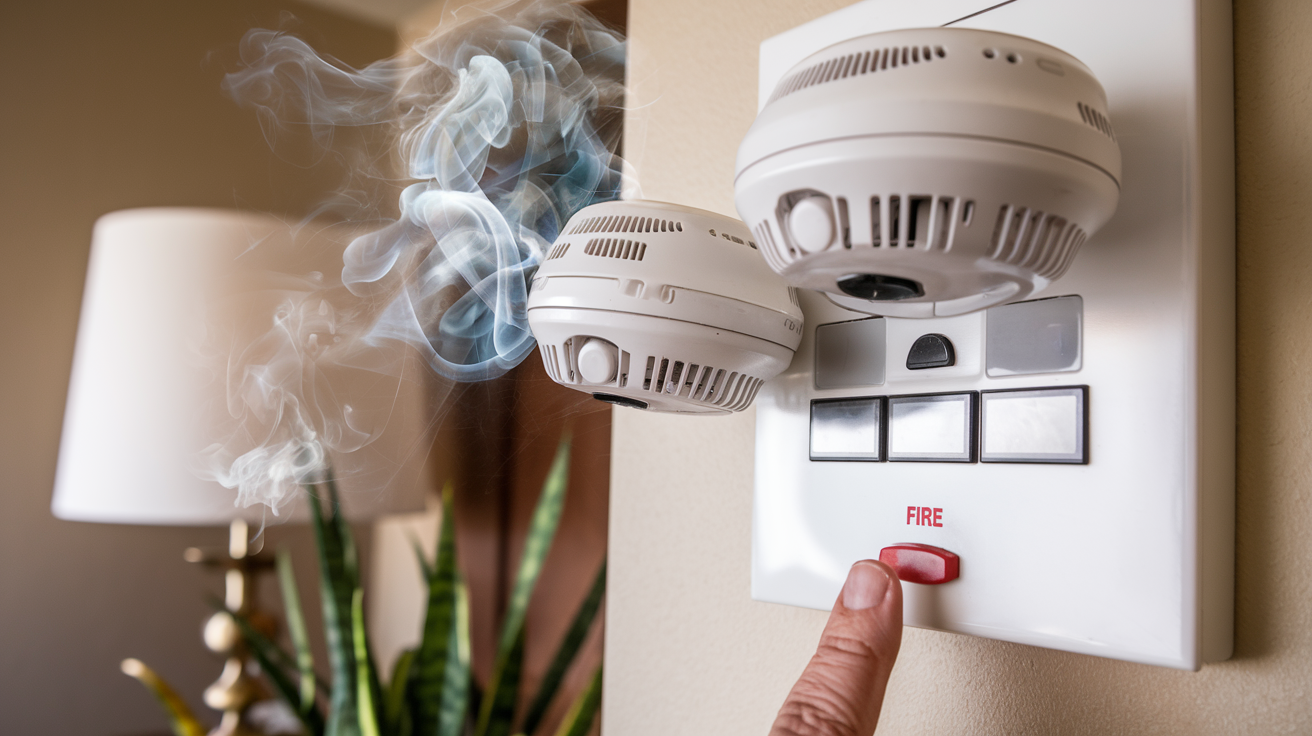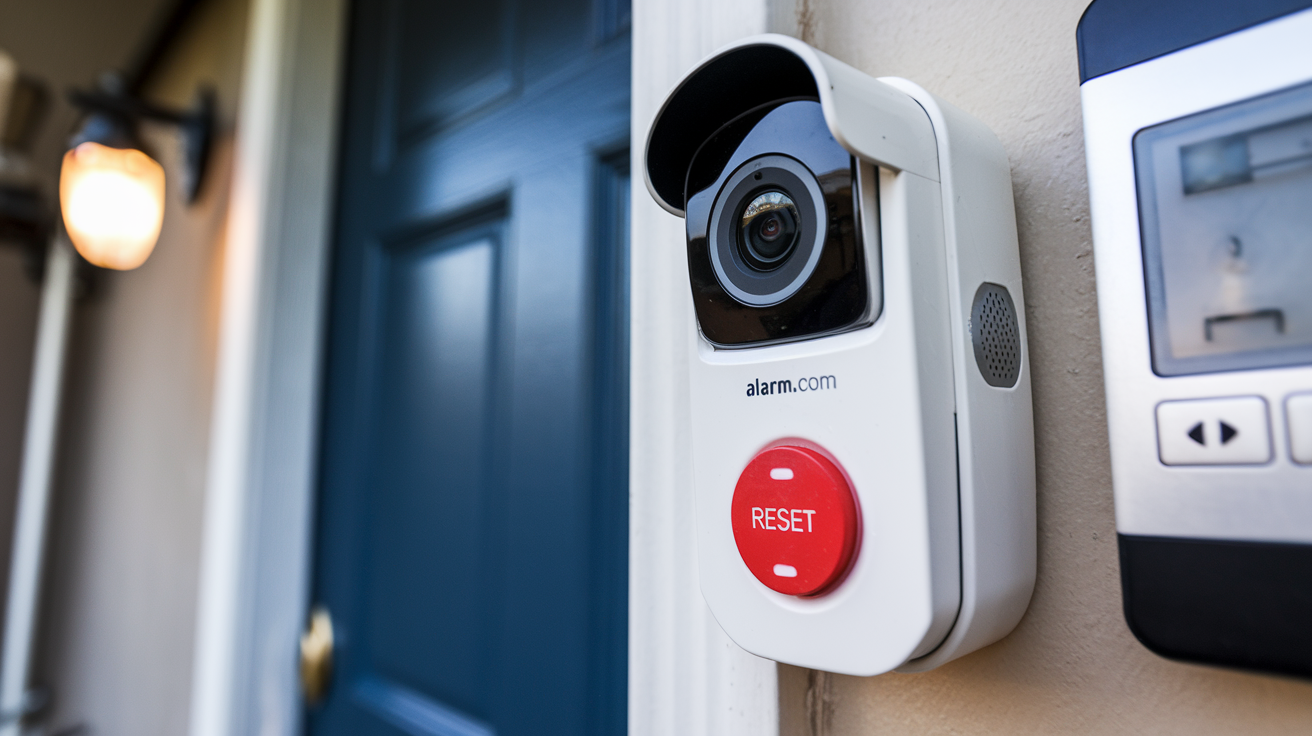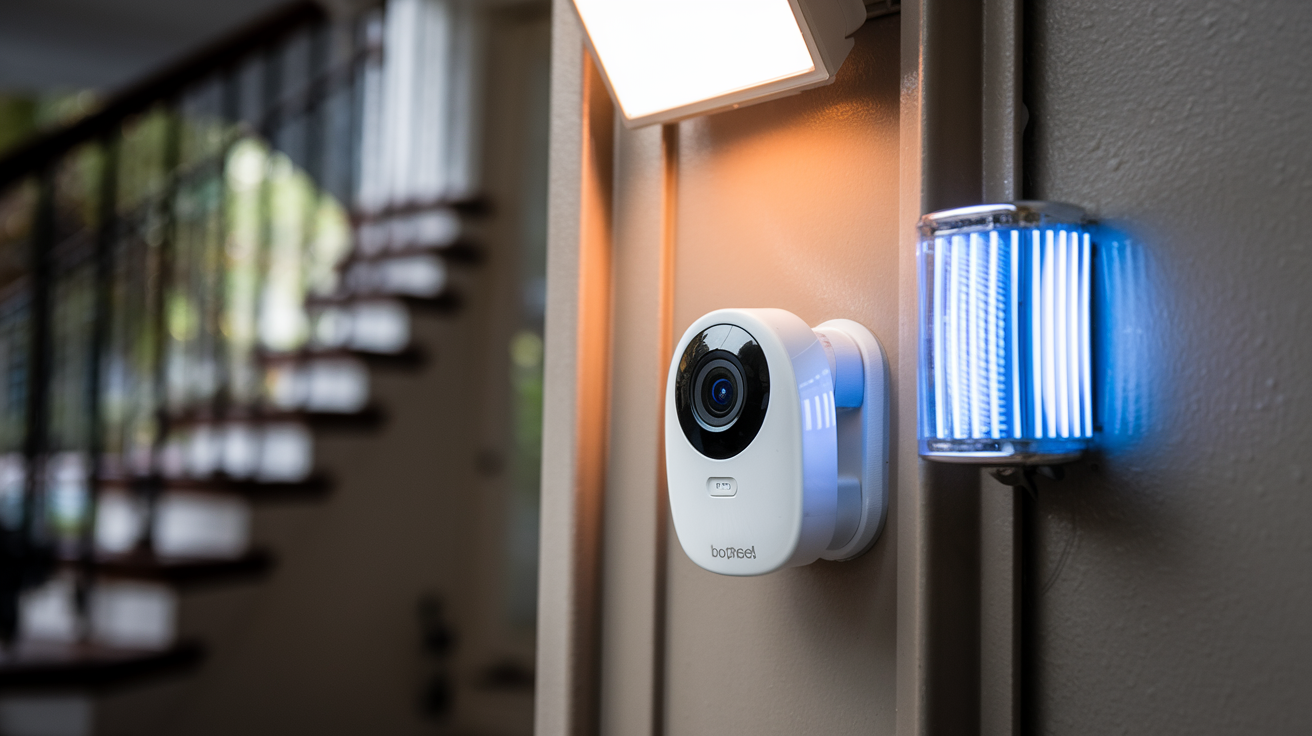Fire alarms are one of the most essential safety peripherals that sense smoke and fire in your home and make a loud noise to warn the people in the house of impending danger. But at other times, the fire alarms can ring at the wrong time that is, when there is no actual fire or smoke. This false alarm can be very loud disruptive and annoying. Suppose your fire alarm starts ringing and you know there is no fire you will probably want to switch off the alarm faster.
It is crucial to turn off a false fire alarm correctly. You don’t want to interfere with the alarm or turn it off and have the smoke detector be needed when there is a fire. The following article will detail the safe ways how to shut down various fire alarms especially since it is not always that fire alarms are signaling an actual fire.
First, confirm if there are real fires or smoke before panicking. Every time your fire alarm sounds, be sure to look for signs of actual fires before you can switch off the alarm. Check for smoke or smell that is suspicious, which may suggest that something is on fire or has been smoldering. Visually search all the rooms and areas to ensure there are no fires. Make sure that there are no burning candles or cigarettes left on stovetops or ovens or anything else that may cause a fire Only when you are certain that there is no fire, proceed to turn off the alarm. You could probably arrive at work to find your house burnt down because you were in a hurry to switch off the alarm before even ascertaining whether it was on.
Determine Your Fire Alarm Type three basic fire alarms are commonly installed in most homes. Knowing which type you have will help you identify the right steps to follow when doing so during false alarms.
- Battery-operated alarms These are small portable alarms that are self-contained and require battery power alone, making them easy to install on the walls or ceiling. They have a test button and may require to be demounted to get to the battery compartment.
- Wired alarms While hard-wired smoke detectors are connected to your home's electrical system for power supply. They will have a test button but will not have a separate battery compartment.
- Security alarms Standalone and monitored alarm security systems have incorporated fire alarms and alert emergency responders. They have control panels and keypads for controlling the systems in the building.
Turning Off Battery-Powered Alarms The battery-operated smoke alarms have a button that will dismiss the noise in a matter of seconds. But this only mutes the loud ringing of the alarm not turning off the entire detector in question. It will restart sounding if further smoke is still detected. To turn off the indication of battery alarm for a false signal
- Press the test button first to attempt to turn off the alarm.
- If that does not work, remove the unit from the bracket or ceiling where it is mounted for easy cleaning. Sometimes it can be as simple as turning the alarm counterclockwise or pushing a detach tab.
- Twice remove the battery compartment and take out the battery or batteries. This will pull the plug on all electricity.
- Take batteries out for about fifteen to twenty minutes to disable the alarm. It eliminates any smoke remaining or problems that cause false alarms in the process. Replace batteries and reposition the device to return the fire detection functions to normal when done. Validate the button to check that it works once more using the button.
Turn off the Hardwired Smoke Alarm
Since hardwired alarms do not have batteries that can be removed you have to disconnect the power at the circuit breaker. Find the switch that regulates the circuit of the smoke detector. It will normally be named something like Fire Alarm Smoke Detector etc. However if unsure switch off circuit breakers one by one and check after each circuit breaker whether the alarm signal has been disconnected. If the correct breaker has been turned off then the alarm should stop ringing in roughly five minutes when residual power is cut off. Turn off the breaker for at least fifteen minutes so that there can be a proper resetting of the system. This clears any issues of sense that may lead to false triggering so that the alarm can be tripped deliberately. Switch the flip breaker back on to continue normal functioning, then test the alarm by pressing the button to confirm that it is functional as well. If problems continue, contact an electrician.
Turning Off Alarm Systems
For monitored home security systems with integrated fire alarms the process involves using the control panel or keypad. Proceed to input the system's passcode if you are required to turn off protection modes. If you do not know the code you probably cannot turn the system off by hand. Alarm mute options can be found in most panels either as a button on the panel or as an option in a settings menu. This stops the alarms but maintains the system in operation and continuously monitors. The company will still have been alerted though. To disconnect smoke detectors and fire alarms for maintenance or to reset them completely you often need to place the whole system into the test mode. Especially, make sure to check specific user menus and options to see details of your system supplies. Do not keep the system powered off for long as dispatchers may be notified if automatic test signals are not transmitted. If any of the false alarms are attended turn the return system to active mode as soon as possible.
When not to turn off fire alarms Do not unplug batteries or turn off the fire alarms if there are fire or smoke indications within the structure. Do not turn them off unless you have confirmed that the alert was a false signal. They are useful for preventing fires, but when they are disabled during an actual fire, the lives of people are at extreme risk. The intended message is to evacuate the building right away in real fire situations and only turn off alarms when the fire department tells that it is safe after handling the situation. My attempt to disconnect the fire alarms during the actual fire drills can cause people to get hurt or even lead to criminal charges in some countries.
Conclusion
Thus, learning how to shut off home fire alarms when they produce false alarms ensures that the annoying loud noise is stopped quickly. Just be certain to always check for actual fires first before disabling them. And never touch alarms during actual events that have been confirmed by a human being when probably the lives of some people are at the mercy of these detectors. Don’t let false alarms scare you though because you can easily disarm them while at the same time keeping your homes safe.
Protect your home today with ADT’s top-rated security solutions!
Call now at +1 877-470-7879 to get a free consultation and find out how you can secure your home with the best in the business. Don’t wait—ensure your peace of mind with ADT!






